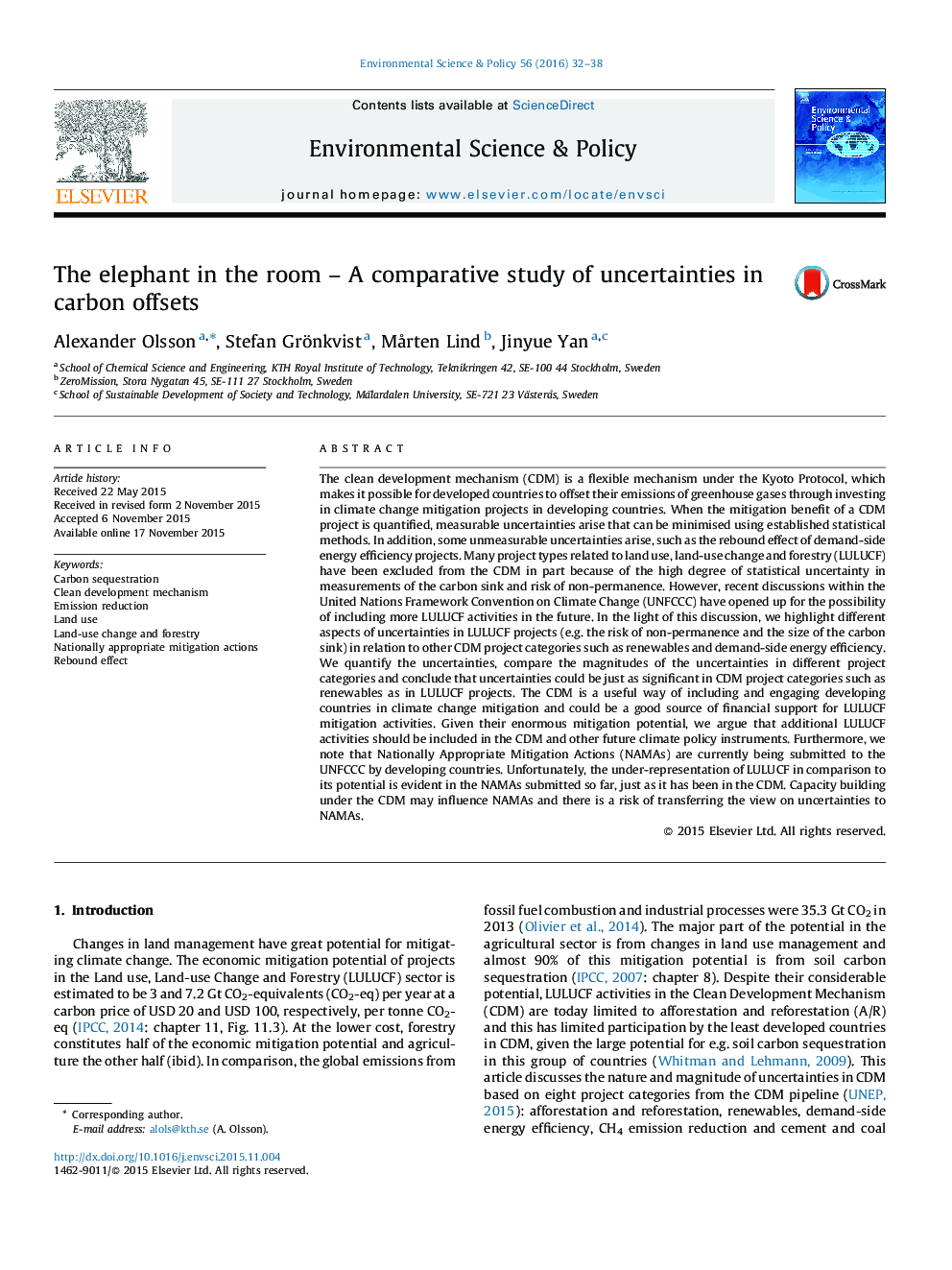| کد مقاله | کد نشریه | سال انتشار | مقاله انگلیسی | نسخه تمام متن |
|---|---|---|---|---|
| 7467078 | 1485052 | 2016 | 7 صفحه PDF | دانلود رایگان |
عنوان انگلیسی مقاله ISI
The elephant in the room - A comparative study of uncertainties in carbon offsets
ترجمه فارسی عنوان
فیل در اتاق - مطالعه تطبیقی عدم قطعیت در جبران کسری کربن
دانلود مقاله + سفارش ترجمه
دانلود مقاله ISI انگلیسی
رایگان برای ایرانیان
کلمات کلیدی
تداخل کربن، مکانیسم توسعه پاک، کاهش انتشار، استفاده از زمین، تغییر کاربری زمین و جنگلداری، اقدامات ضعیف ملی مناسب، تأثیر بازتاب،
موضوعات مرتبط
مهندسی و علوم پایه
مهندسی انرژی
انرژی های تجدید پذیر، توسعه پایدار و محیط زیست
چکیده انگلیسی
The clean development mechanism (CDM) is a flexible mechanism under the Kyoto Protocol, which makes it possible for developed countries to offset their emissions of greenhouse gases through investing in climate change mitigation projects in developing countries. When the mitigation benefit of a CDM project is quantified, measurable uncertainties arise that can be minimised using established statistical methods. In addition, some unmeasurable uncertainties arise, such as the rebound effect of demand-side energy efficiency projects. Many project types related to land use, land-use change and forestry (LULUCF) have been excluded from the CDM in part because of the high degree of statistical uncertainty in measurements of the carbon sink and risk of non-permanence. However, recent discussions within the United Nations Framework Convention on Climate Change (UNFCCC) have opened up for the possibility of including more LULUCF activities in the future. In the light of this discussion, we highlight different aspects of uncertainties in LULUCF projects (e.g. the risk of non-permanence and the size of the carbon sink) in relation to other CDM project categories such as renewables and demand-side energy efficiency. We quantify the uncertainties, compare the magnitudes of the uncertainties in different project categories and conclude that uncertainties could be just as significant in CDM project categories such as renewables as in LULUCF projects. The CDM is a useful way of including and engaging developing countries in climate change mitigation and could be a good source of financial support for LULUCF mitigation activities. Given their enormous mitigation potential, we argue that additional LULUCF activities should be included in the CDM and other future climate policy instruments. Furthermore, we note that Nationally Appropriate Mitigation Actions (NAMAs) are currently being submitted to the UNFCCC by developing countries. Unfortunately, the under-representation of LULUCF in comparison to its potential is evident in the NAMAs submitted so far, just as it has been in the CDM. Capacity building under the CDM may influence NAMAs and there is a risk of transferring the view on uncertainties to NAMAs.
ناشر
Database: Elsevier - ScienceDirect (ساینس دایرکت)
Journal: Environmental Science & Policy - Volume 56, February 2016, Pages 32-38
Journal: Environmental Science & Policy - Volume 56, February 2016, Pages 32-38
نویسندگان
Alexander Olsson, Stefan Grönkvist, MÃ¥rten Lind, Jinyue Yan,
